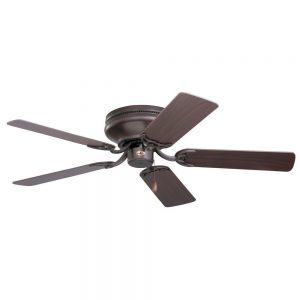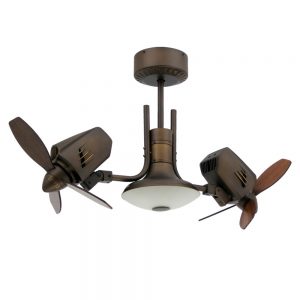How Much Does It Cost to Repair/Install a Ceiling Fan in Singapore?
Almost every household has a ceiling fan in Singapore.
Installing a ceiling fan is a great economical alternative to air-conditioning as it saves on electricity and is cheap to maintain.
Many factors are affecting the cost of mounting a ceiling fan in Singapore, e.g. height of the ceiling, size of the fan and fans with light etc.
We discuss what is considered a good estimate to fixing/installing your fans before consulting an electrician in the sections below.
Cost Guide for Installation of Ceiling Fan in Singapore
Installing a ceiling fan in Singapore varies in price depending on the height of the ceiling fan, whether it is installed on a false ceiling or not, and whether a new electrical point has to be installed.
It is better to get an electrician to visit your home for an exact quotation. Ensure that the electrician you hire is has a license by EMA (Energy Market Authority), to ensure their credibility and competency level.
Check out our cost guides for other electrical appliances for your home.
Cost of a ceiling fan: $100 – $800
Check out Harvey Norman and Gain City for varies types of Ceiling fan in Singapore
Average price of installation
- Installation cost of ceiling fan 3.0m and below: $40-$60
- Installation cost of ceiling fan (on existing point) above 3.0m : $60 – $100
- Installation cost of ceiling fan (new point/ false ceiling) : $130
- Repair cost per trip: :$50-$70
Considerations When Installing a Ceiling Fan in Singapore
Height of room
A ceiling fan’s vertical position should be placed at the right level depending on the height of your room, for maximum effect and safety.
A down rod attaches to your home ceiling is being used to adjust the ceiling fan’s suspended height, below is a table of suitable matches between the length of the downward rod and the height of the room.
Height of Room | Length of the down rod |
8 feet | Directing mounting to the ceiling |
9 feet | 6 |
10 feet | 12 |
11 feet | 18 |
12 feet | 24 |
13 feet | 36 |
14 feet | 48 |
15 feet | Greater than 60 inches |
Area of the room
Choosing the right size of fan blade will give you the most optimal wind speed in the room, depending on the size of your room, you will require different fan blade sizes. The list below is a guild line you can choose to follow for the installation of a ceiling fan in Singapore.
Length of the blade in meters | Room size | Location |
0.5 to 0.9 | Smaller than 75 square feet | Very small rooms: laundry rooms, utility rooms, bathrooms etc |
1 to 1.2 | Smaller than 175 square feet | Small rooms: e.g. bedroom, study room etc |
1.3 to 1.5 | Smaller than 350 square feet | Large room: kitchen or master bedroom etc |
Greater than 1.5 | More than 350 square feet | Very large room: living room or dining room |
Location of your Ceiling fan
As stated earlier, the location of your ceiling fan requires a different size of blade span and different down rod lengths depending on the dimension of your room. Another condition that determines what fan you should install is the humidity of the room.
For example, in bathrooms or kitchens, it would be better to install a ceiling fan rated for damp conditions. Subsequently, for outdoor places like the balcony where water may splatter in, it is advisable to get a ceiling fan rated for wet conditions to avoid water damage to your ceiling fans.
Types of Ceiling Fans in Singapore
1) Standard Ceiling Fans
- Comes in many different styles versatile for any interior décor
- Usually have 4-5 blades
- It may come in the form of a pull switch or remote control
- Some can be fitted with light bulbs
- Able to mount on flat or slanted ceiling with a downward rod
- Ceiling fans should be suspended at least 7 feet high, while it should be suspended at least feet 9 high indoors
2) Low Profile Ceiling Fans

- https://www.overstock.com/Home-Garden/Emerson-Snugger-42-inch-Oil-Rubbed-Bronze-Traditional-Low-Profile-Ceiling-Fan-with-Reversible-Blades/10518192/product.html
- These ceiling fans are used when the ceiling is less than 8 feet
- Directly fitted to the mounting bracket
- Wind speed is not as powerful as standard ceiling fans
- Helps to disperse cold air throughout the room when you turn on the aircon
3) Energy Saving Ceiling Fans
- Usually more costly than standard ceiling fans
- Can help to save money in the long run as it uses less electricity for the same rotation speed
- Aerodynamically designed to have lesser air resistance when rotating saving more energy
- Save at least 20% more energy as compared to standard ceiling fans
4) Dual Motor Ceiling Fans

- https://www.modernfanoutlet.com/fan-styles/double-fans.html
- The main motor has two rods connected horizontally
- Each rod has its owns customisable fan heads
- You can set the specific fan speed and oscillate particular direction for each of the fans
- Usually, use to cover a bigger surface
- Outdoor fans
5) Outdoor Ceiling Fans

- https://www.lightology.com/index.php?module=vend&vend_id=146
- They are not affected by the moisture of outdoor spaces
- Blades are suitable for all-weather condition, and it is wrap proof
- There are two types of outdoor ceiling fans Wet ceiling fans and damp ceiling fans
Damp ceiling fans can withstand the humid and moist environment, suitable for Singapore’s climate. They are used to cover porches, patios and sunrooms.
Wet ceiling fans are waterproofed and able to come in contact with water. They are designed to be placed outdoors.
Common Ceiling Fan Problems
Have you ever experienced hearing a strange humming sound from your ceiling fan? Many people experience a multitude of small problems with their fans, and with it, a conundrum: do you learn to live with this minor annoyance in the back of your head? Or will you fork up more money to get it replaced?
Well, unless your fan is old enough to merit buying a new one, these glitches can still be fixed.
So before you jump the gun and decide to buy a new ceiling fan for your home or call for a professional to repair your fan, it’s important to know the common problems with ceiling fans that can be fixed in no time.
-
Wobbly ceiling fan
A wobbly ceiling fan is a common issue that everyone encounters. We often decide to leave the fan to be; however, it can be a distraction in our everyday lives. Here are some reasons which could cause fans to wobble:
- Ceiling fans are loosely screwed to the electric box located in the ceiling
- Improper installation of electrical ceiling box, causing it to be loose
- Fan blades are not adequately secured in the mounting brackets
- The mounting bracket is not fastened correctly to the fan’s motor
- Improper positioning of fan blades
- Bent fan blades
- Fan blades are imbalanced
- Excess dust accumulation on fan blades
Do not assume that your ceiling fan is faulty just because it wobbles. The problem may easily be solved by turning off the fan, checking all the screws and blades are secured tightly or wiping your fans to remove excess dust. Contact a fan installation professional to ensure an expert does the installation.
-
Noisy ceiling fan
A little noise from a fan does not raise an issue and may not seem to be worth the hassle to check on. However, if the noise persists, it could mean that the fan has a faulty part. Below are a few causes that your ceiling fans are making noise:
- The ball bearing of the ceiling fan is not lubricated properly
- Foreign objects are caught up in the fan blades or the fan’s motor
- Imbalanced fan blades
- The fan blade is scraping the fan shroud or motor cover
It is suggested that you try to tighten all the parts within the ceiling fan and give both interior and exterior of the fan a thorough cleaning if you encounter these issues. If the noise is still noticeable, you should call an electrician as there could be problems with the internal circuitry of the fan.
-
Ceiling/Wall Fan Stuck on One Speed
A fan stuck on one speed can be frustrating, especially when it continually spins at a low speed. This is usually a consequence of the internal circuit of the fan, such as:
- A blown motor capacitor
- The pull cord being broken off
- Insufficient lubricant on the ball bearing
A motor capacitor is responsible for the amount of electricity passing through to the fan’s motor and is used to control the fan’s speed. Hence, a blown motor capacitor is the prime suspect when a ceiling fan is stuck at a certain speed.
When the capacitor is overloaded, only small amounts of electrical current will flow through and cause the fan speed to slow. For wall-mounted fans, it is possible that the pull cord has broken off, leaving the fan stuck at one speed. Additionally, take steps to ensure that your fan’s ball bearing is well lubricated so that friction does not slow down rotation speed.
-
The ceiling fan is not rotating
When your fan decides to simply stop working altogether, check if it happens to be one of these problems:
-
-
- The circuit breaker has tripped due to a power overload
- There is an open circuit due to losing connection
- There are problems with the internal circuitry of the fan’s motor
-
When your ceiling fan stops abruptly, the first thing to check is your panel box. See if there was a power trip that set off the circuit breaker. Subsequently, check if the electrical supply has been cut off from the fan, or any loose wires which will cause an open circuit. If all else fails, the issue likely lies with internal defects, be it a faulty ball bearing or a damaged motor due to a power overload.
We recommend that you should consult a professional and avoid dealing with wires or internal parts of your fans alone. This assures that your problem is fixed safely, and a thorough check can be made to prevent further issues from arising. Besides, some fans come with a warranty on purchase. Keep that in mind, when choosing a fan, as it can save on cost later should the fan spoil.
Should you be interested in looking for other electrical services, Homees provides a list of reputable electrical professionals who provide services including home network installation, electrical & wiring installation and many more.
Related Articles
We’re here to improve your home
Speak to hundreds of reliable pros, view their gallery, inspirations, and know the best prices with our resources.
Have full control over your home improvement projects with Homees.





